Black British film: British Film Institute
Scenes from a hostile environment: a history of Black British protest film and television
Black British filmmakers have for decades depicted and chronicled protest against racism and injustice. Ashley Clark explores this ghost canon of British film and television, and uncovers a lineage of urgent work that has for too long been overlooked or actively suppressed.
Ashley Clark
7 August 2020
Shortly after midnight on 17 May 1959, Kelso Cochrane, a Black Antiguan expatriate to Britain who lived and worked as a carpenter in Notting Hill, was attacked by a gang of three white youths who stabbed him to death with a stiletto knife.
Many of the films discussed here are now available to watch in a special collection on BFI Player.
This shocking murder followed on the heels of the previous year’s race riots in the same West London district, which was a stronghold for fascist organisations such as the White Defence League and Oswald Mosley’s Union Movement. The week-long disturbances in August ’58 were sparked by the racist backlash against the presence of members of the Windrush generation. These people of the Commonwealth, many of whom came from the Caribbean (including my paternal grandparents, who moved to London from St Andrew, Jamaica, in late 1956), were invited by the British government to help rebuild the postwar economy, but on arrival faced overt and covert hostility, discrimination in housing and employment, and police harassment, in addition to the terrible weather.
Coloureds Parade Outside Downing Street (1959)
The British Pathé News archive website features a poignant silent clip of Cochrane’s populously attended funeral in Ladbroke Grove, but there’s another intriguing Cochrane-related snippet there, too. Jarringly titled Coloureds Parade Outside Downing Street (1959), it shows a small number of marchers (mostly Black, one white) outside the gates of No 10, protesting police inactivity over Cochrane’s unsolved murder and brandishing placards bearing slogans such as “Fascism began like this in Germany”, as white policemen impassively stand guard.
These haunting images of dignified resistance to state power resonate strongly in today’s climate of Black Lives Matter activism, and are early entries in a lineage of moving images spanning six decades that depict and explore Black British protest against racism and injustice. This material, encompassing fiction and nonfiction film and television of varying lengths and styles, constitutes a ghost canon of British filmmaking: urgent work that has often been overlooked, actively suppressed, or left to languish in the margins, unloved or inaccessible. Although Black British communities have always faced intense disrespect and betrayal – consider the ongoing Windrush scandal, a stupefying intergenerational tragedy that has seen hundreds of Commonwealth citizens detained, deported and denied legal rights as a result of the Conservative government’s ‘hostile environment’ policy for immigrants – this body of work serves as a vivid reminder that such mistreatment has never been taken lying down.
Pressure in Babylon
The subject of British racial tension was tackled admirably in so-called ‘social problem’ films like Basil Dearden’s Sapphire (1959) and Roy Ward Baker’s Flame in the Streets(1961), but it would take time for Black filmmakers to begin telling stories of activism from a Black perspective.
Baldwin’s Nigger (1969)
An early pioneer was Horace Ové, who was born in Belmont, Trinidad and Tobago, in 1939, and came to Britain in 1960. Following a stint as a film extra in Rome, Ové returned to the UK to study at the London School of Film Technique (now London Film School), then began making documentaries, including 1969’s Baldwin’s Nigger.
This gripping vérité-style short, made at the height of America’s Black Power movement and in the early stages of Britain’s own version, was filmed at London’s West Indian Students’ Centre, and shows the writer James Baldwin, alongside comedian Dick Gregory, addressing a group of students about the Black experience in America and how it relates to Britain and the Caribbean. The film is thrilling not just because it captures Baldwin, eyes ablaze, at the peak of his rhetorical powers, but because it offers evidence that political discourse was thriving among young Black people in Britain – Baldwin’s audience are not just passive listeners; they speak their minds, too.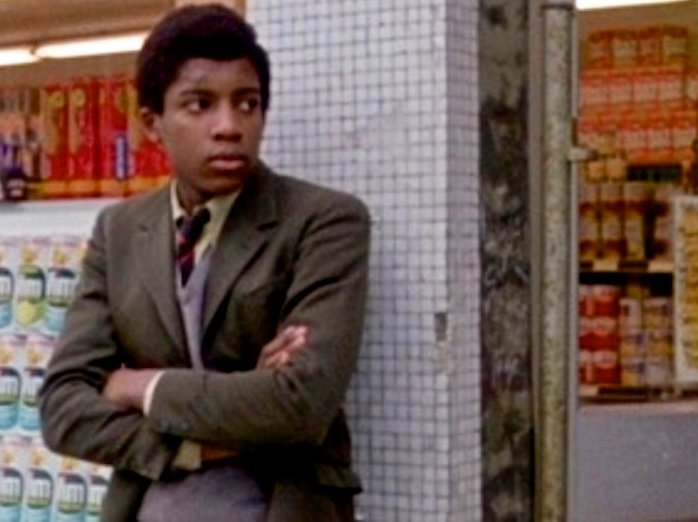
Herbert Norville as Tony in Pressure
The central character of Ové’s first fiction feature film Pressure (1975), however, is no firebrand. Tony (Herbert Norville), a British-born, 16-year-old recent school leaver, is caught adrift between his Trinidadian parents’ religious conservatism and enduring respect for British colonial power, and the staunch Black Power activism of his elder brother Colin (Oscar James). Tony tentatively joins the Black Power cause, mostly because of his crush on the charismatic American activist Sister Louise (Sheila Scott-Wilkinson). Colin eventually winds up in jail on false drug possession charges, and the film ends with Tony and a sparse band of protestors on a rain-sodden ‘Free Colin’ march outside the Old Bailey – it may be the most forlorn-looking protest sequence ever filmed.
Despite Pressure’s ambivalent tone and observational style, it was held back from any significant release for at least two years by its own financial backer, the British Film Institute, which was alarmed by its honest depiction of police brutality. According to Ové, the BFI wasn’t overly keen on the property in the first place. “Well, the BFI didn’t really want to do it, to be quite honest,” the director said in a 2005 interview at the Barbican. “We took that idea around television, different companies and everybody turned their back, and the BFI was a bit worried about doing it at the time also.”
It is sadly telling that the first Black British feature film – a landmark moment that should have been a cause for celebration – was handled by white institutional forces in such a hesitant, ham-fisted manner. It was eventually published on DVD by the BFI – better late than never – in 2005.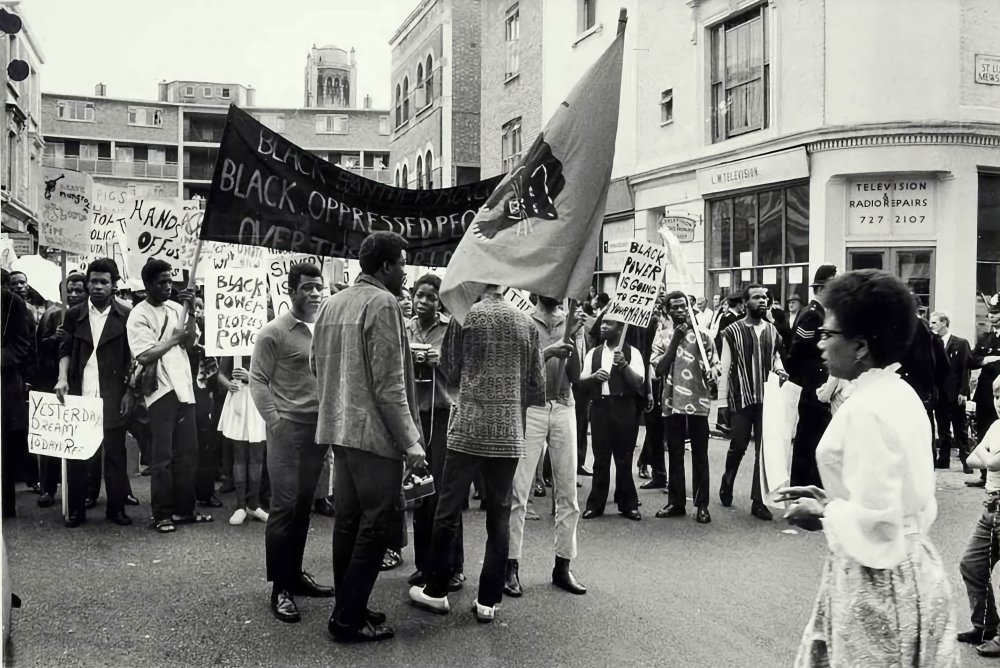
The Mangrove Nine (1973)
Though Ové was only able to make one more theatrically released feature film (Playing Away, 1986), he worked steadily in television, taking care to foreground the dignity of his Black characters. He associate-produced Franco Rosso’s short documentary The Mangrove Nine (1973), an account of the sensational trial of a group of Black British activists accused of inciting a riot at a 1970 protest against the police targeting of Notting Hill’s Mangrove Caribbean Restaurant. Not only did the nine – who included Darcus Howe, a founder member of the British Black Panther Party – win their freedom, they forced the first ever judicial acknowledgement of racism in the police.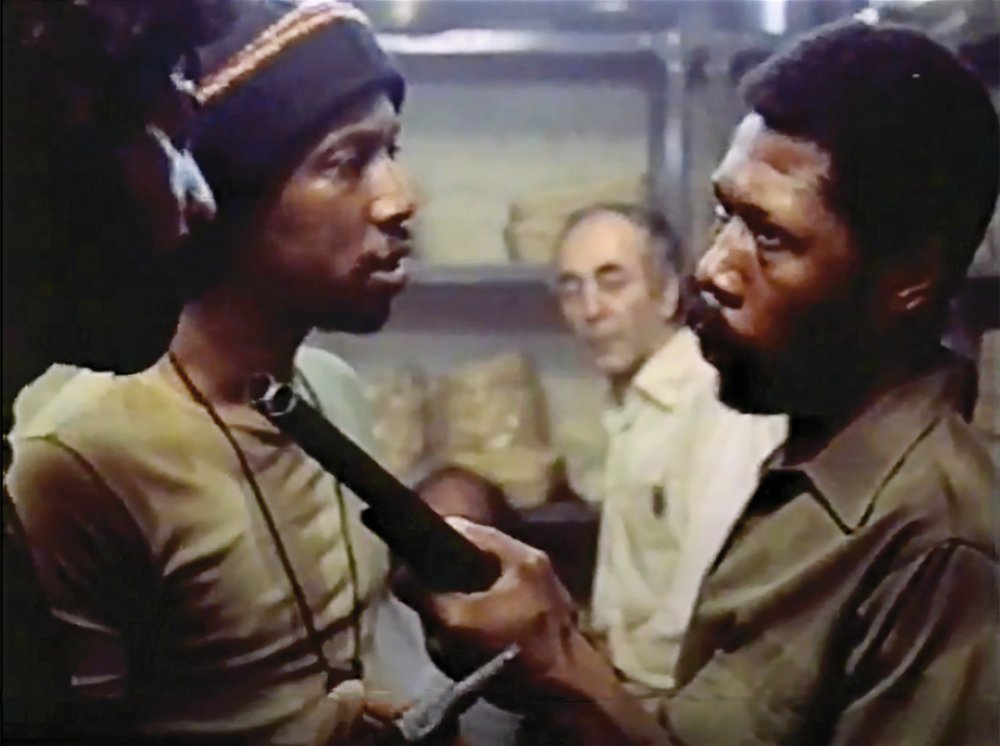
A Hole in Babylon (1979)
In 1979, Ové directed the BBC Play for Today film A Hole in Babylon, a dramatisation of the 1975 ‘Spaghetti House siege’ in Knightsbridge, in which a botched attempt by three Black men to commit an armed robbery escalated into a six-day stand-off. In the eyes of the British press and the Metropolitan police, these men were simply violent thugs, but Ové gave them psychological depth, complex motivations (the men had been influenced by African anti-colonial and American liberation movements), and fleshed out the social context for Black people, who were tired of being shut out of society at every turn.
While Pressure and A Hole in Babylon were eventually seen and discussed reasonably widely, the same could not be said for the riveting hour-long documentary Blacks Britannica (1978). Made by husband-and-wife team David Koff (white American) and Musindo Mwinyipembe (Black British, born in Tanzania), the film was commissioned by US public broadcaster WGBH Boston as part of its World series, which vowed “to help Americans take off their special American glasses and look at the world through the eyes of others”. Free of guiding narration, the film forgoes conventional documentary ‘objectivity’ to situate British racism within a wider class struggle, and indicts the nation’s ruling elite for its exploitative, punitive treatment of its Black citizens.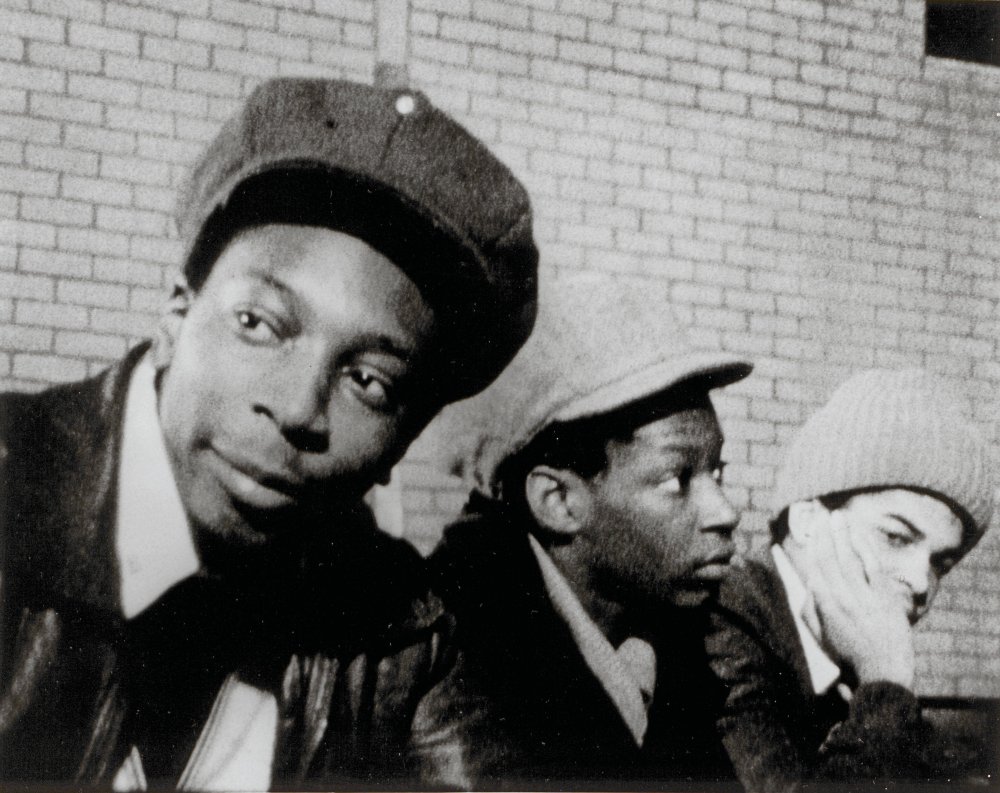
Blacks Britannica (1978)
Crucially, the film doesn’t present Black people as mere victims, but as lucid agents of change and resistance. We hear clear-eyed, first-person accounts of targeted police harassment from young Black men in different regions of Britain, while the writer Ron Phillips tells the horrifying story of the hounding, abuse and eventual killing of the homeless British-Nigerian man David Oluwale by Leeds policemen in 1969.
These stories are punctuated by sharp, often forthrightly Marxist analysis from influential community figures such as Darcus Howe and Colin Prescod. Prescod, who today chairs the Institute of Race Relations, would go on to direct the 1984 documentary From You Were Black, You Were Out, about the history of West Indian life in Ladbroke Grove, including the Mangrove Nine and Kelso Cochrane stories. Blacks Britannica ends pointedly with scenes of open conflict between young Black people and the police, and footage of the Birmingham reggae band Steel Pulse performing their prescient song Handsworth Revolution, a generational call to arms.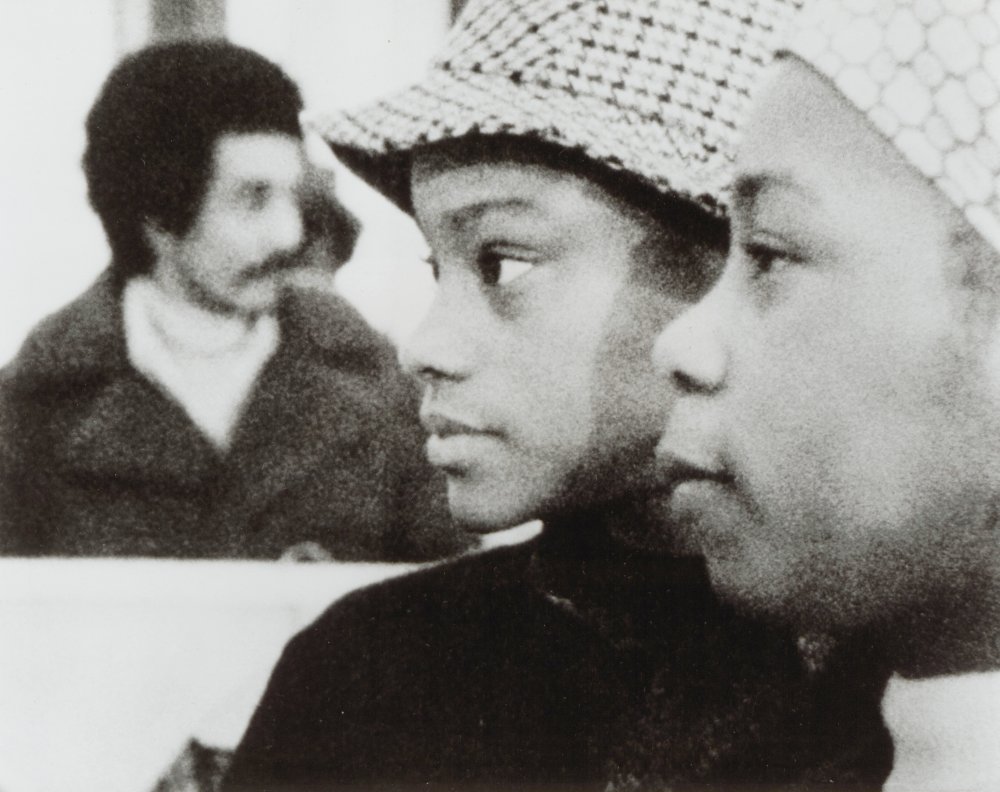
Blacks Britannica (1978)
Perhaps predictably Blacks Britannica endured a tortured route to the screen. Without informing the filmmakers, WGBH aired a revised cut, on the grounds of “editorial integrity”, which excised disturbing scenes of police target practice, and material suggesting that British racism was conspiratorial and institutionalised. This treatment exposed a schism between the purportedly progressive liberalism of WGBH, and the radical left viewpoint of the filmmakers. As a furious Koff put it: “It’s a clear case of censorship. They [WGBH] simply don’t like the politics of the film.”
As reported by journalist Peter Biskind, the re-edit was aired nationwide on 10 August 1978, and the original version was shown a few days later in the Boston area only after a local coalition of activists put pressure on WGBH. WGBH then filed a lawsuit against Koff aimed at preventing him from distributing his version of the film, while the British Conservative MP Dudley Smith filed a complaint about the film to the US ambassador in London. The deputy director of the British Information Services in the US branded Blacks Britannica “dangerous”, and the BIS even demanded that WGBH commission a programme showing race relations in Britain in a more favourable light. This brutally honest film was never broadcast in Britain. There is, however, a happy postscript. Under the supervision of producer Margaret Henry, the film was digitally remastered in 2008 and is now legally available to watch online.
The suppression of Blacks Britannica at home illustrated the extent to which popular culture – in particular, the question of who gets to tell certain stories, and who gets the right to see and interpret them – had become a pitched battleground in Britain. Such ideas were the terrain of the brilliant, Jamaican-born scholar Stuart Hall who, having left Jamaica aged 19 in 1951 to take up a Rhodes scholarship at Oxford, had established himself as one of Britain’s foremost public intellectuals by the late 1970s.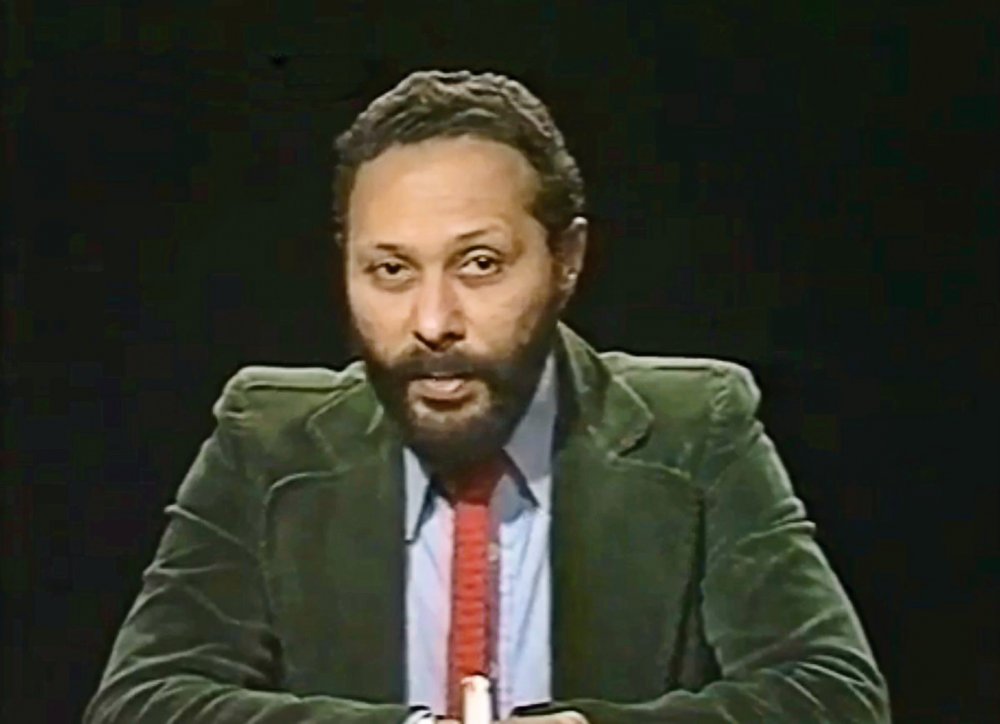
It Ain’t Half Racist, Mum (1979)
In March 1979, weeks before the election of Margaret Thatcher, Hall starred in his own protest film of sorts, a surgical critique of racism entitled It Ain’t Half Racist, Mum. Written and presented by Hall alongside actor and activist Maggie Steed, It Ain’t Half Racist, Mum screened on BBC2 as part of Open Door (1973-83), a series which gave airtime to outsiders to use under their own editorial control.
The show is frank from the start, as Steed delivers a message to camera: “When the BBC says that a programme like this is ‘outside their control’, what they’re telling you is that they don’t think it’s balanced, neutral, or fair. We hope to show that many of the programmes which are under the editorial control of the BBC and ITV are themselves biased and unbalanced, especially in the coverage they give to Britain’s Black community.”
Commenting on carefully chosen clips, the pair analyse the racism and biases within sitcom stereotypes, and dissect the insidious ways that far-right nationalists, including Enoch Powell, were given freedom within the supposedly neutral space on current affairs television to articulate their hostile positions on immigration, effectively framing the national discourse. (Anyone pondering the programme’s contemporary relevance may consider the fact that far-right politician Nigel Farage – who has never successfully been elected as an MP at Westminster – has appeared 35 times on the BBC’s Question Time, and is its ninth all-time highest record appearance holder.)
Sadly, It Ain’t Half Racist, Mum did not provoke a period of self-analysis from the BBC. Instead, it struck a raw nerve: a subsequent Open Door episode began with a feebly apologetic message that entirely disavowed Hall and Steed’s critique: “The BBC wishes to dissociate itself from any such suggestions [of racial bias] which it considers to be entirely without foundation.”
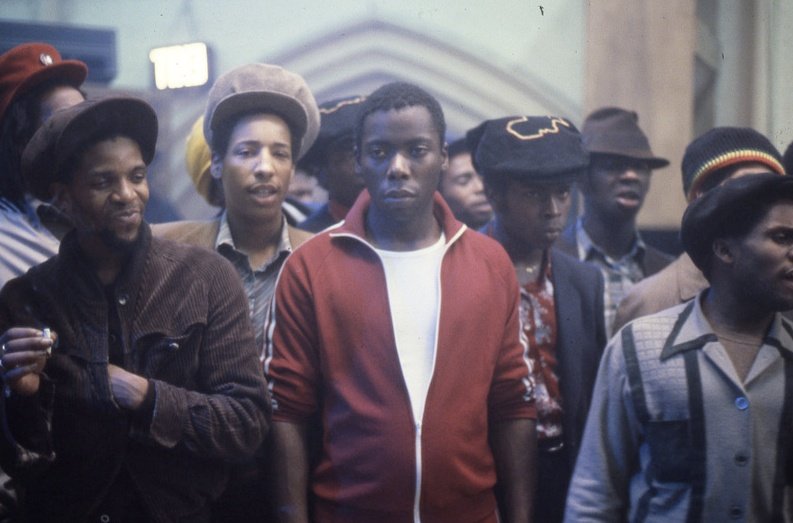
Babylon (1980)
The following year, in a neat piece of meta-casting, Steed appeared in a small role as a virulent racist in Franco Rosso’s Babylon (1980), about a young Black man, Blue (Brinsley Forde), and his friends in South London seeking escape from racist oppression and police harassment via the euphoria of reggae soundclash culture. Babylon was given a restrictive ‘X’ certificate by the BBFC, and, as reported by Time Out’s Vivien Goldman, was later rejected by the New York Film Festival on the grounds that it was “too hot”, and likely to incite violence among Black audiences – a paternalistic fear later projected on to Spike Lee’s Do the Right Thing (1989), and, back home, Rapman’s surprise British box-office sensation Blue Story (2019).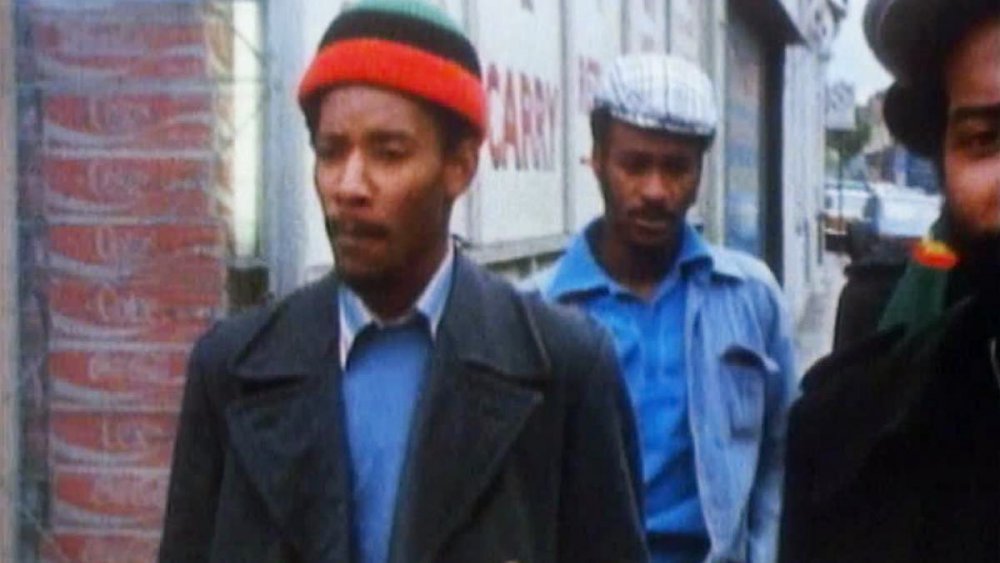
Dread Beat an’ Blood (1979)
Rosso would not have been surprised by such controversy. Five years earlier, the BBC abandoned a Play for Today version of Babylon due to its allegedly inflammatory content, while the TV premiere of Dread Beat an’ Blood (1979), Rosso’s BBC Omnibus documentary about the dub poet (and 2020 winner of the PEN Pinter Prize) Linton Kwesi Johnson, was delayed until after the general election that brought Thatcher to power. The BBC feared that one of Johnson’s poems, including the line “Maggi Tatcha on di go/wid a racist show/but a she haffi go”, would sway viewers to vote against her, a perspective that only served to confirm its own bias.
Released at the end of 1980, Babylon anticipated what would become one of the most pivotal years for British race relations. In January 1981, 13 young Black people were killed in a fire at No 439 New Cross Road, London, the home of Yvonne Ruddock, whose 16th birthday was being celebrated that night and who herself died in the fire – the Grenfell Tower blaze of its day. The subsequent bungled police investigation, and the absence of formal condolences from either the Queen or Margaret Thatcher, sparked outrage in London’s Black community and inspired the formation of the New Cross Massacre Action Committee, who organised the Black People’s Day of Action on 2 March.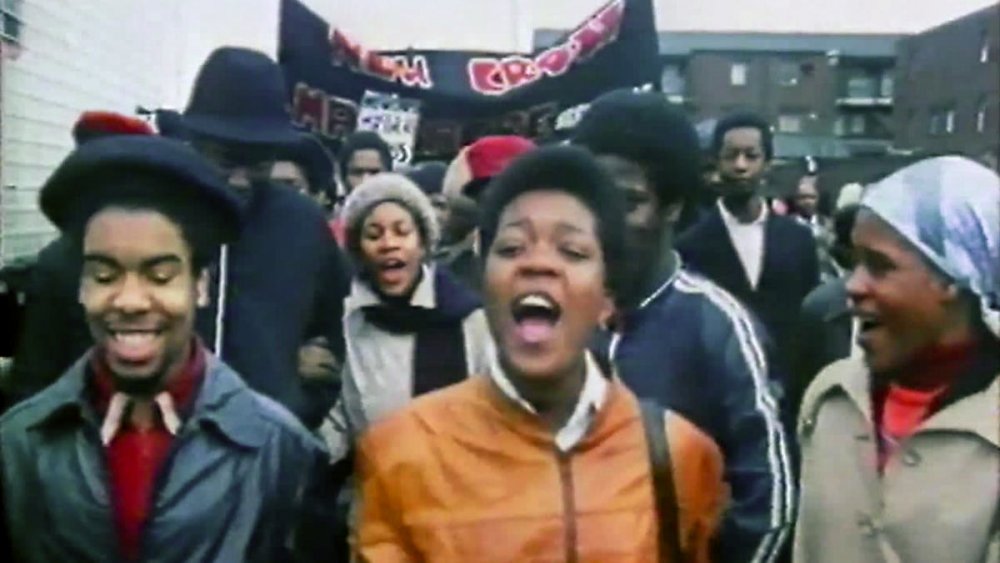
Blood Ah Go Run (1982)
This protest was captured by filmmaker Menelik Shabazz in the documentary Blood Ah Go Run (1982), an essential snapshot of resistance, and a companion piece to his feature debut Burning an Illusion (1981), a character study which culminates in the political awakening of Pat (Cassie McFarlane), a young working-class Black woman.
Then, from April to July 1981, widespread civil unrest – a reaction to mass unemployment and increasingly militarised policing under Thatcher – exploded in London, Liverpool, Birmingham and Leeds. The following year’s Scarman report, commissioned by the government, identified “complex political, social and economic factors” that created a “disposition towards violent protest”, but did not explicitly condemn police racism and denied the existence of “institutional racism”.
In this climate, many public institutions apportioned funding to Black, Asian and other artists of colour in order to satisfy a growing demand among these underrepresented groups for, at the very least, some visibility in the media – although, in the sceptical words of historian Kobena Mercer, these concessions reflected “the need to be seen to be doing something”.
These interventions yielded some notable results. The ACTT Workshop Declaration of 1982 was an unprecedented trade agreement between the Association of Cinematograph, Television and Allied Technicians, the filmmakers’ union, local councils and public institutions – including the newly launched Channel 4, a soon-to-be vital outlet for broadcasting independent work – which made filmmaking groups with a minimum of four full-time staff eligible to receive guaranteed financial support. In short: breathing space and room to be creative, the perennial dream for artists.
Collective action
Black filmmaking workshop groups such as Sankofa Film and Video Collective, Black Audio Film Collective and Ceddo Film and Video Workshop seized on this moment to create new idioms of aesthetically adventurous, forthrightly political work.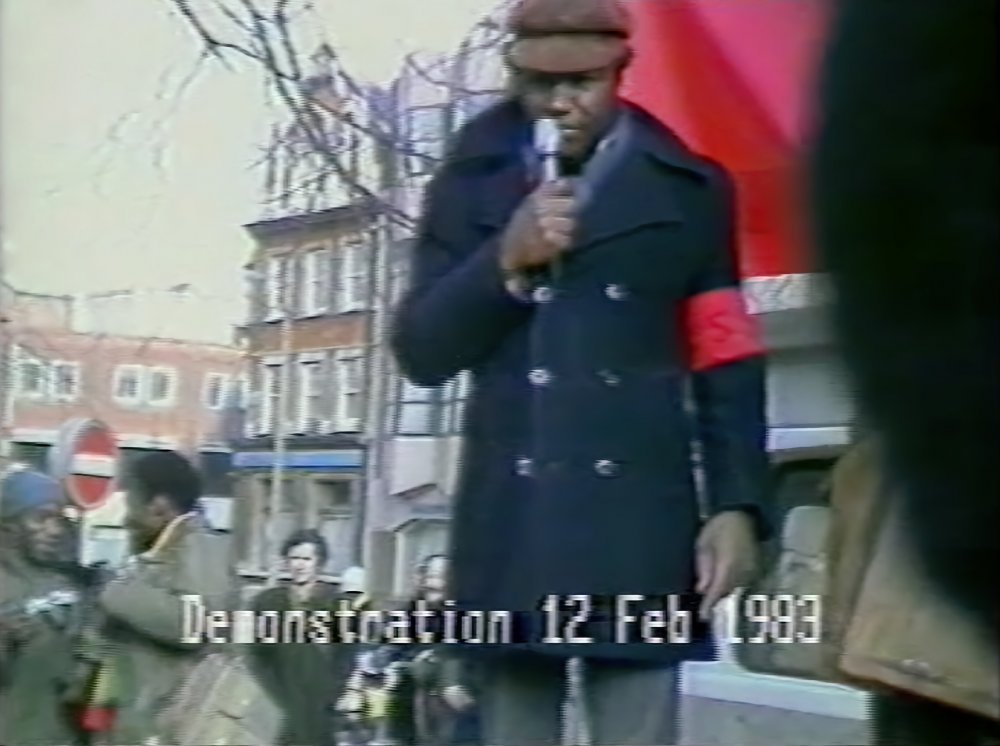
Who Killed Colin Roach? (1983)
Shortly before Sankofa was formed in 1983, its founder member Isaac Julien, an art student at Central St Martins, made his first film, the short documentary Who Killed Colin Roach?. It explores the fallout from the suspicious death of a Black 21-year-old at the entrance of Stoke Newington police station in January 1983, and mixes traditional documentary techniques with music, poetry and early experiments in video art.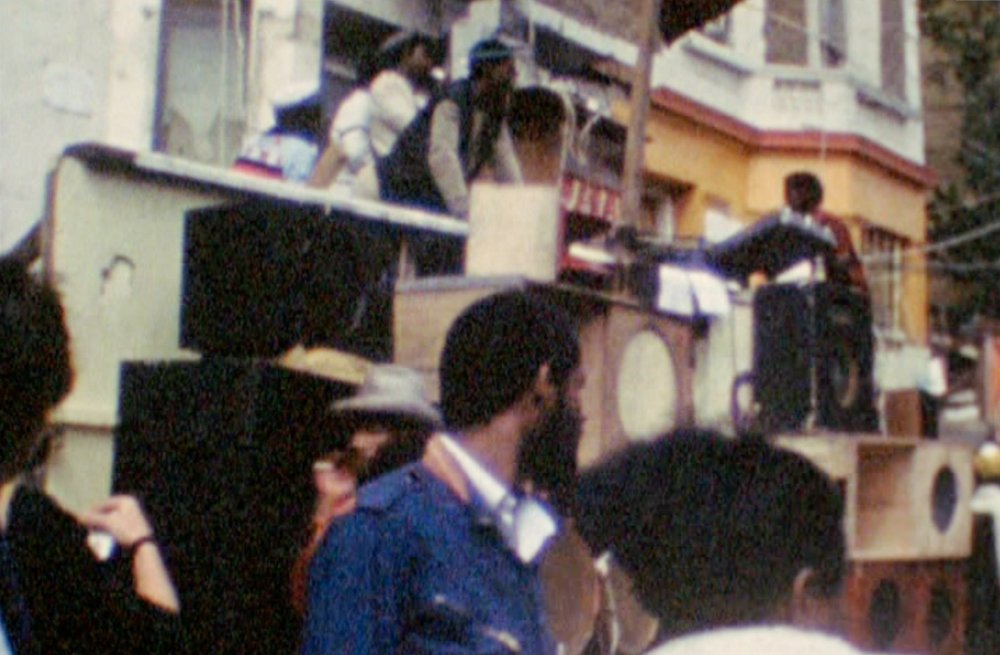
Territories (1984)
Sankofa’s debut, the extraordinary Territories (1984), uses the ‘territory’ of the Notting Hill Carnival, and its fraught history – including the violence that erupted at the 1976 festival, again sparked by arbitrary harassment and arrests of young Black attendees by police – as a focal point to explore multiple tensions: class, sex and queer sexuality, desire, race and racism, labour, state surveillance and police violence. The film isn’t shy of critiquing more traditional Carnival documentaries, and strives, as outlined in its own repeated, mantra-like narration, to locate “…a history. A herstory of cultural forms specific to Black people.”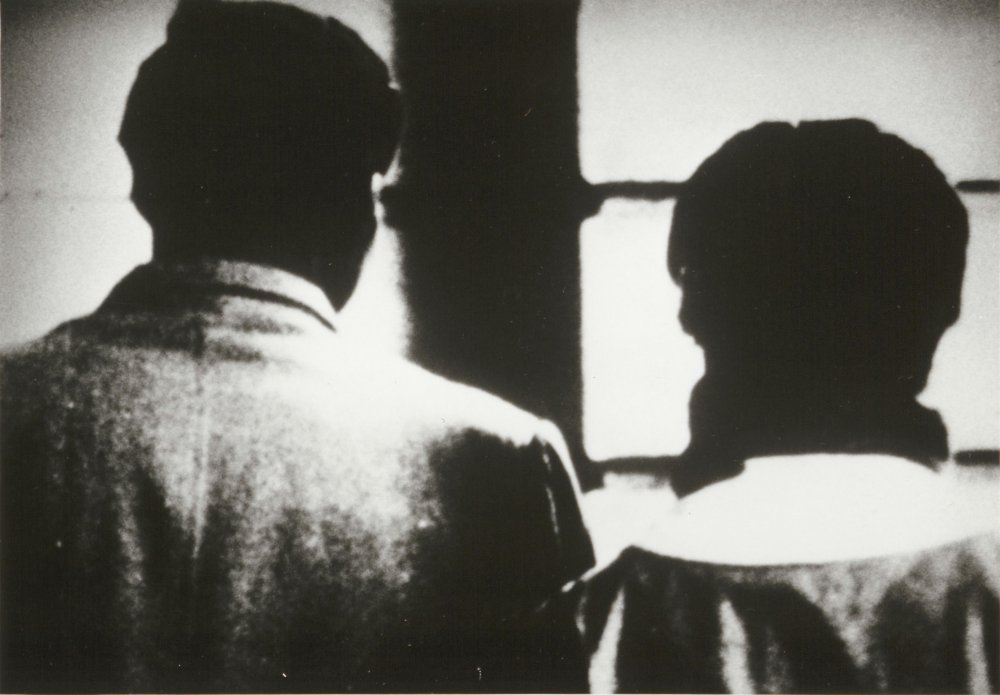
Handsworth Songs
Credit: BFI National Archive
Sankofa’s contemporaries, Black Audio Film Collective, formed in 1982 at Portsmouth Polytechnic before relocating to Hackney, East London. Their work echoed Sankofa’s in its restless sonic and visual experimentation.
BAFC’s key film Handsworth Songs, directed by group member John Akomfrah in 1986, was a response to the further waves of mass civil unrest that erupted nationwide – and specifically in the Birmingham district of the title – in 1985, following two incidents in which Afro-Caribbean mothers were victims. On 28 September, the police shot Dorothy ‘Cherry’ Groce in her Brixton home, paralysing her for life; a week later, on 5 October, Cynthia Jarrett died of heart failure during a police search of her home on Tottenham’s Broadwater Farm estate.
A dense, disturbing, free-form mosaic, Handsworth Songs combines footage of 1985’s violence with poetic narration from multiple sources, archival and media materials, and poignant newsreel snippets of post-war Black and Asian immigrants to Britain going about their daily business, all underpinned by Trevor Mathison’s eerie sonic landscapes.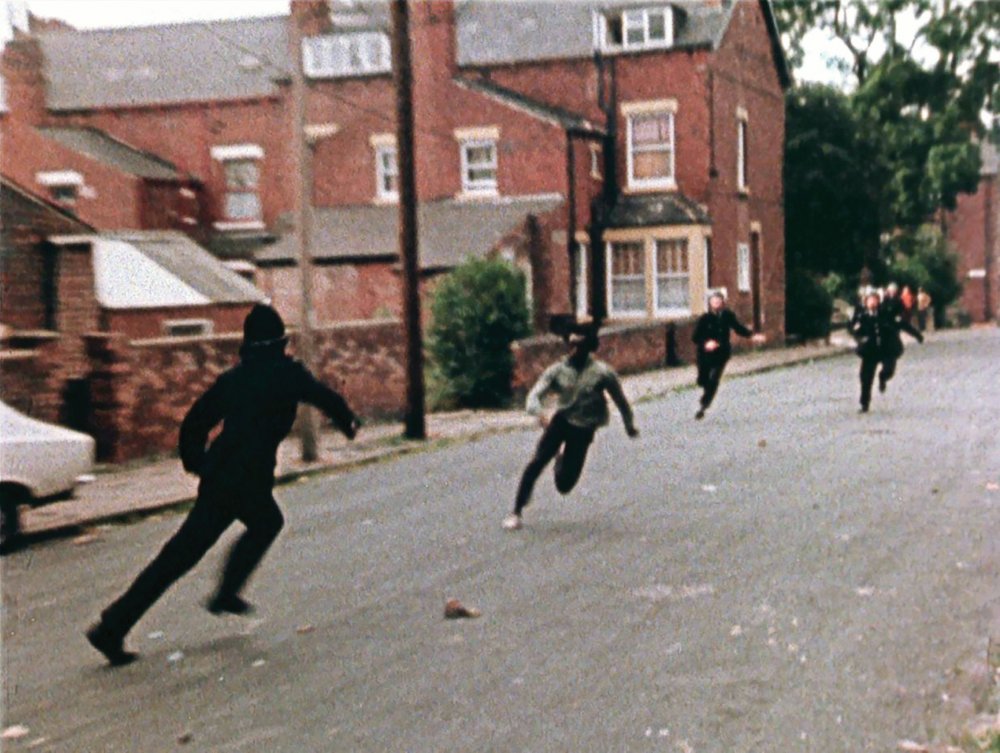
Handsworth Songs (1986)
The film won a prestigious BFI Grierson Award for best documentary, but wasn’t to everybody’s taste. Following its Channel 4 premiere, Salman Rushdie deemed it “no good” in the Guardian’s letters page, prompting a fierce rebuttal by Stuart Hall in a subsequent edition: “What I don’t understand is how anyone watching the film could have missed the struggle which it represents, precisely, to find a new language.”
Hall’s letter provoked a further response, from Darcus Howe, who sided with the author: “[Rushdie] simply says that the attempt to shape a new language does not work, and I agree with him.” These spirited exchanges highlighted something remarkable: for the first time, experimental Black British film art was being debated by public intellectuals in a national newspaper.
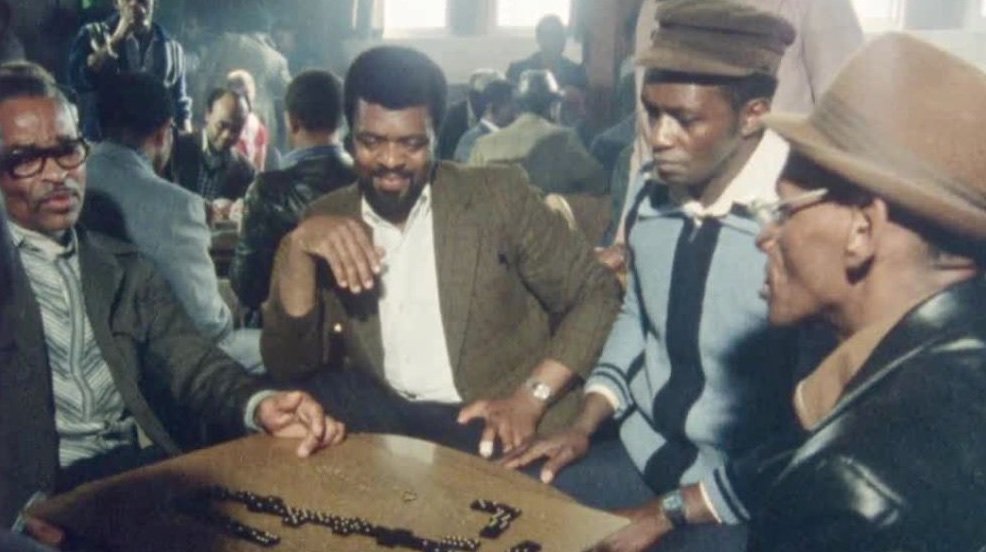
Riots and Rumours of Riots (1981)
The era’s third prominent Black film collective, Ceddo, in the words of journalist Ann Ogidi, “operated like a guerrilla unit using film as a weapon”. This approach proved useful for the other workshops, who integrated footage captured by Ceddo into a number of their own films, including Handsworth Songs.
Founder members Imruh Bakari Caesar and Menelik Shabazz were also behind independent production company Kuumba, whose work included Black British youth culture documentary Step Forward Youth (1977, directed by Shabazz), and Blood Ah Go Run. Caesar’s Riots and Rumours of Riots (1981), meanwhile, explored the history of Caribbean immigration to the UK, and was rich in oral histories.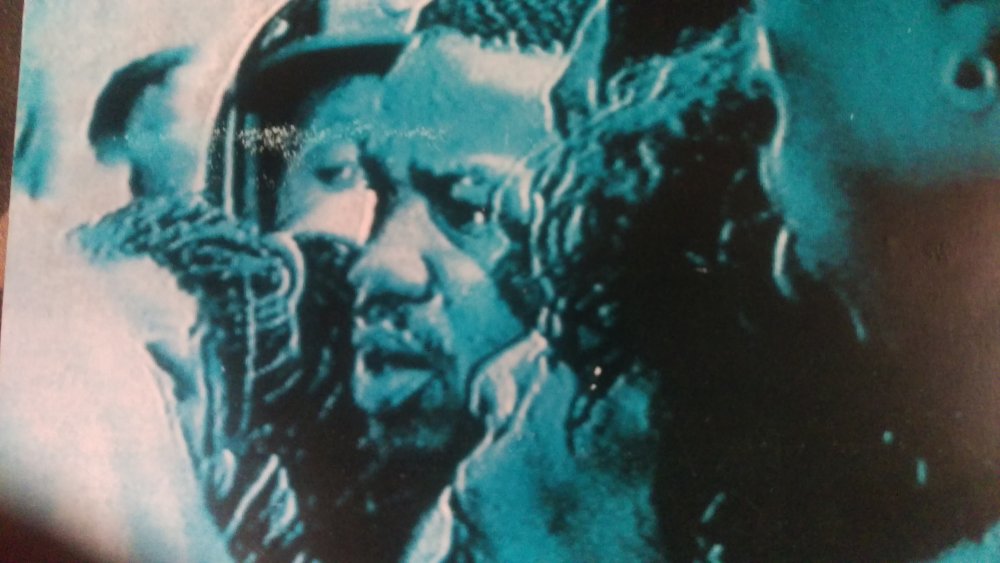
The People’s Account (1985)
Ceddo’s Milton Bryan directed the group’s first film, The People’s Account (1985), a white-hot record of community anguish in response to the death of Cynthia Jarrett. Interweaving interviews with people from Broadwater Farm and footage from the Broadwater Farm enquiry press conference, The People’s Account examines, in the words of a Ceddo press release, the role that the media, in collusion with police, plays to “distort and undermine the fundamental reasons for the uprisings”.
Ceddo’s use of the word ‘uprising’, rather than ‘rioting’, is deliberate, with the events of Broadwater Farm labelled in the film as a “classical example of self-defence by the [Black] community”. The People’s Account situates Britain within a context of international struggle, explicitly comparing the police treatment of Black people in Britain to apartheid South Africa.
Unsurprisingly, The People’s Account, which charges the police with “terrorist raids against Black communities”, ran foul of the censors. The Independent Broadcasting Authority (which had to give its approval before films could be shown on British television), in tandem with Channel 4, demanded editorial changes, which Ceddo flatly refused. It was yanked from the schedules, and, like Blacks Britannica before it, never shown on British TV. (Much of the output of the workshop groups has, down the years, been frustratingly inaccessible for home viewing, largely confined to galleries, academic institutions and occasional repertory screenings.)
The People’s Account featured a stately narration by the actor and academic Lola Young(later Baroness Young of Hornsey), who was a keynote speaker at the November 1992 conference ‘Black and White in Colour: Prospects of Black Intervention in British TV and Film’, held at London’s ICA. The conference sought to assess the landscape of access, funding, commissioning and representation within Black film and TV production, and to ask, in the words of conference convener June Givanni, “what depth of Black participation we would find if we scratched the surface” of recent successes in the field. How hopeful could one be of the sustained development of radical, critical Black filmmaking voices in the new decade?
Rotten barrels
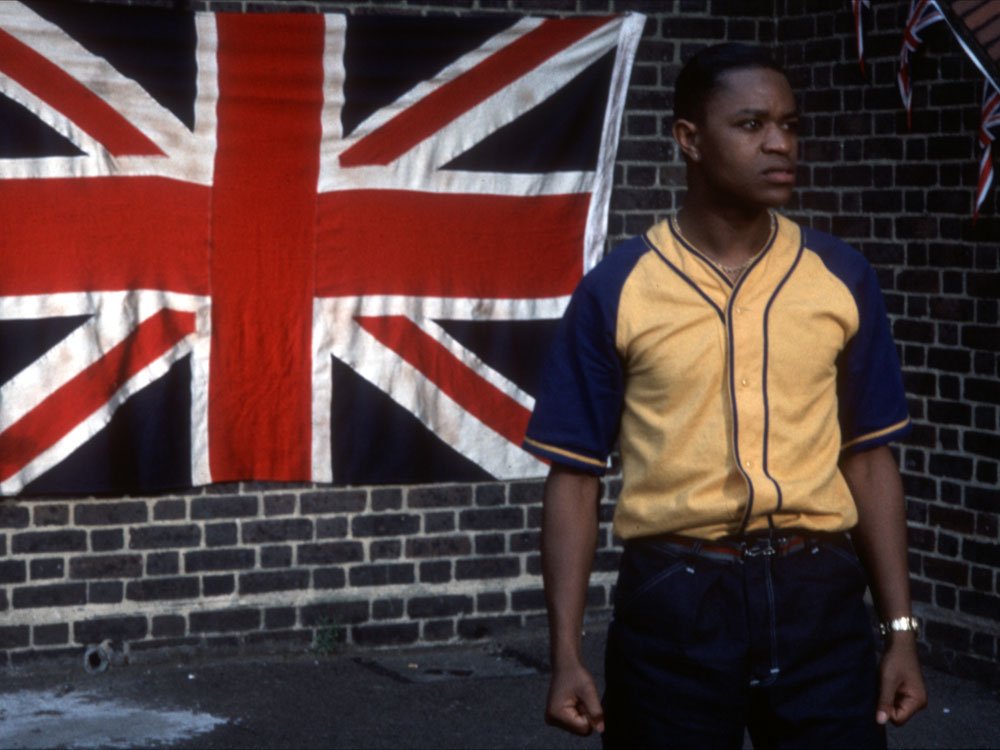
Young Soul Rebels (1991)
The answer, in large part, could be found in the title of Karen Alexander’s 1999 essay Black British Cinema in the 90s. Going Going Gone. This persuasive jeremiad cited the few unorthodox, politically challenging Black British films made in the decade, including Isaac Julien’s vibrant period piece Young Soul Rebels (1991), Black Audio Film Collective’s stark British Black Power docudrama Who Needs a Heart (1991), and Ngozi Onwurah’s furious dystopian thriller Welcome II The Terrordome (1995), but also lamented increasingly risk-averse commissioning, and the paucity of British films centring Black life in complex ways. Alexander alludes to one of the frequent, flawed arguments of the era: that multiculturalism had triumphed, rendering the need to focus on specific minority groups less urgent.
Any myths of happy multicultural harmony in the 90s were shattered by two appalling incidents in 1993: first, the murder of Black teenager Stephen Lawrence by a group of white men in south-east London in April; and, in August, the death of 40-year-old Jamaican mature student Joy Gardner, who suffered fatal brain damage after being detained by police during an immigration raid on her home in Crouch End – Gardner was restrained with handcuffs and leather straps, and gagged with adhesive tape wrapped around her head.
The police mishandling of the Lawrence case prompted Alexander to observe: “[I]f a writer had submitted the Stephen Lawrence story [as fiction] for script development, chances are that it would have been refused on the grounds that it was too far-fetched, that it put the police in a bad light, and that as a society we have moved on from the racial antagonism of the 70s and 80s.”
It is hard not to feel that the suppression of films like Pressure, Blacks Britannica and The People’s Account played into a collective national blindness about the severity of British racism. These were vital films that, if widely seen, would have held up an unflattering mirror to society.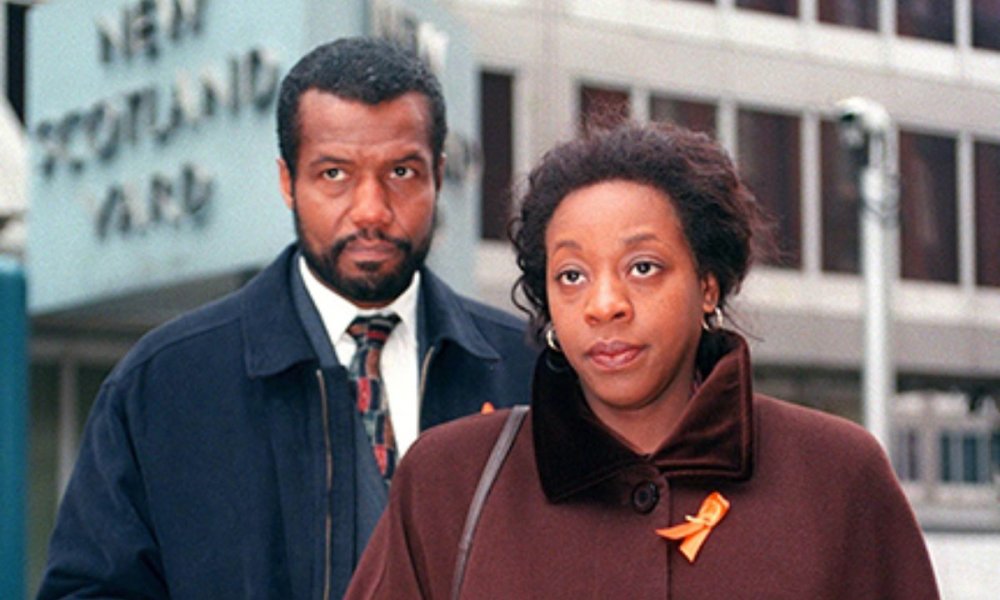
The Murder of Stephen Lawrence (1999)
As it happened, the Lawrence story did become a film, which was no doubt helpful in raising public awareness of the case, and holding up that mirror: Paul Greengrass’s powerful docudrama The Murder of Stephen Lawrence was broadcast on ITV on 18 February 1999, a week before the publishing of the government’s Macpherson report, which concluded that the Lawrence investigation was “marred by a combination of professional incompetence, institutional racism and a failure of leadership by senior officers”.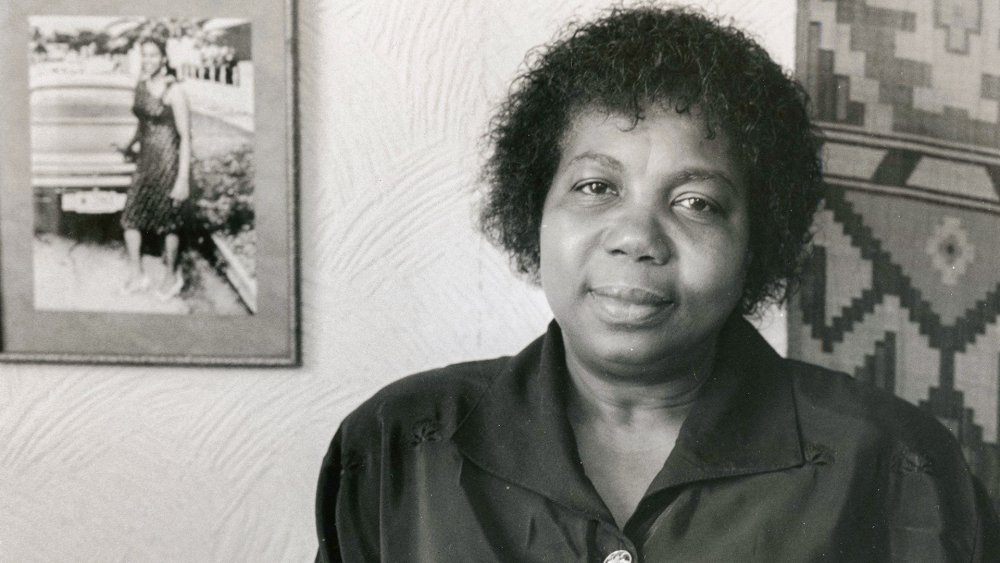
Justice for Joy (1995)
Although the Gardner case is less well known, it too received amplification in the form of the quietly devastating Channel 4 documentary Justice for Joy (1995), directed by Ken Fero. The film follows the public campaign that led to a manslaughter trial at the Old Bailey, and the demoralising effects on Britain’s Black community of the acquittal of the three policemen charged.
Fero, alongside co-director Tariq Mehmood, went on to make the 2001 documentary Injustice, which explored the alarming fact that between 1969 and 1999 more than 1,000 people died in police custody in Britain, without a single police officer being convicted – Gardner’s family feature prominently in the film.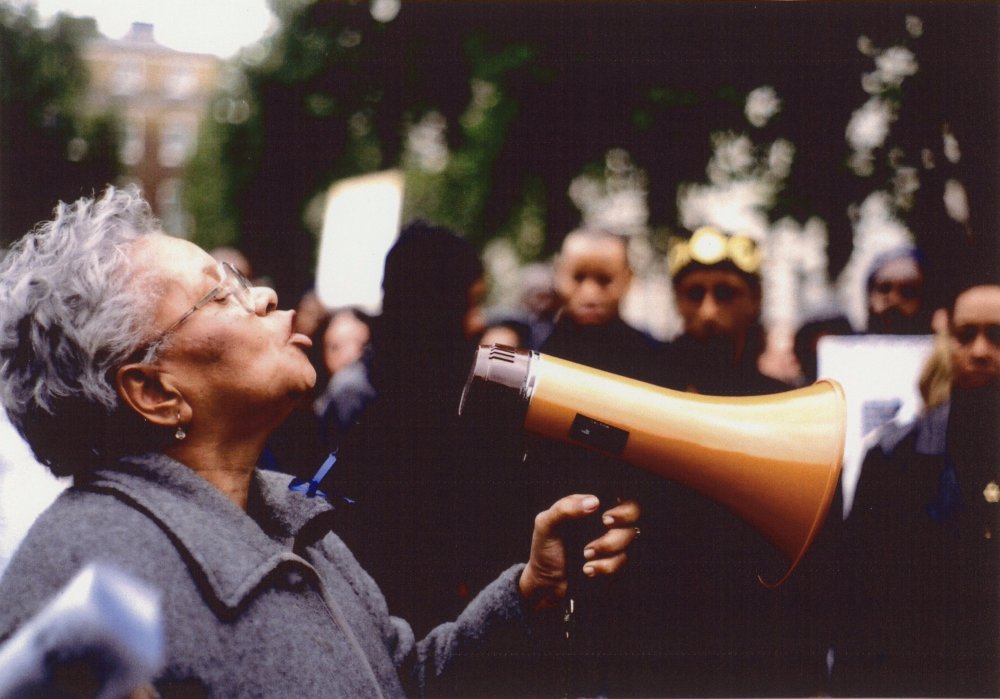
Injustice (2001)
Injustice screened at numerous international festivals but, in keeping with a decades-old pattern, was suppressed. In July 2001, 20 minutes into a screening at London’s Metro Cinema – according to the World Socialist Web Site – staff turned off the projector after receiving a fax from solicitors acting for two of the police officers featured in the film. Days later, an audience of around 150 barricaded themselves inside a room at Conway Hall to watch the film, defying a threat of legal action by the same solicitors. Injustice was due to run at the Ritzy cinema in Brixton that September, but was pulled. By early 2003, even though litigation threats against the film had subsided, and it was being sold to international broadcasters, Channel 4 still refused to show it.
Generation revolution
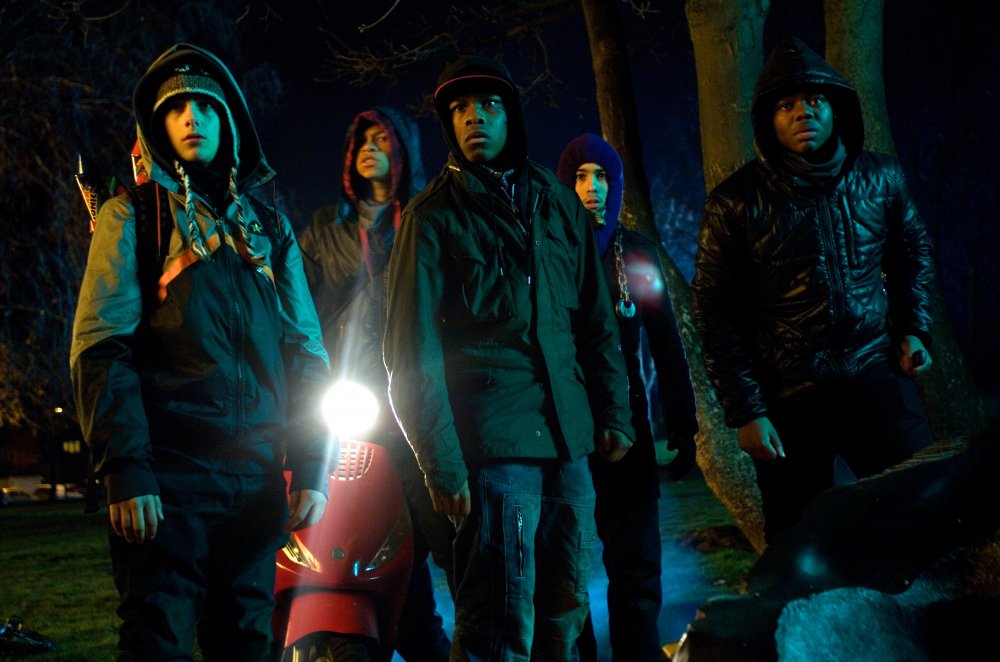
Attack the Block (2011)
Few Black-centred British films were made in the 2000s and early 2010s, though one mini-genre did emerge, with urban dramas such as Bullet Boy (2004) and Kidulthood (2006) tapping into and, in their best moments, subverting stereotypes of alienated Black youth. Joe Cornish’s council estate sci-fi romp Attack the Block (2011) put the ‘alien’ into alienation, and went even further in upending clichéd notions, transforming its surliest ‘hoodie’ (John Boyega, today a prominent Black Lives Matter activist) into a gallant hero.
However, three months after Attack the Block’s release, Britain was to experience a pivotal moment that recalled the trauma of the 1980s. On 4 August 2011, police in Tottenham shot and killed Mark Duggan, a young (and unarmed) mixed-race father of six who, like Cynthia Jarrett before him, was a resident of the Broadwater Farm estate.
The nationwide swathes of violent unrest which followed were branded by Prime Minister David Cameron as “criminality, pure and simple”. In the media, there was scant discussion about the long-simmering underlying motivations for the outbursts. I recall one particular low point: a BBC News host twice introducing Darcus Howe, a veteran of the struggle, as ‘Marcus Dow’, patronising and interrupting him, and asking him if he was a rioter. (The BBC did, thankfully, apologise.)
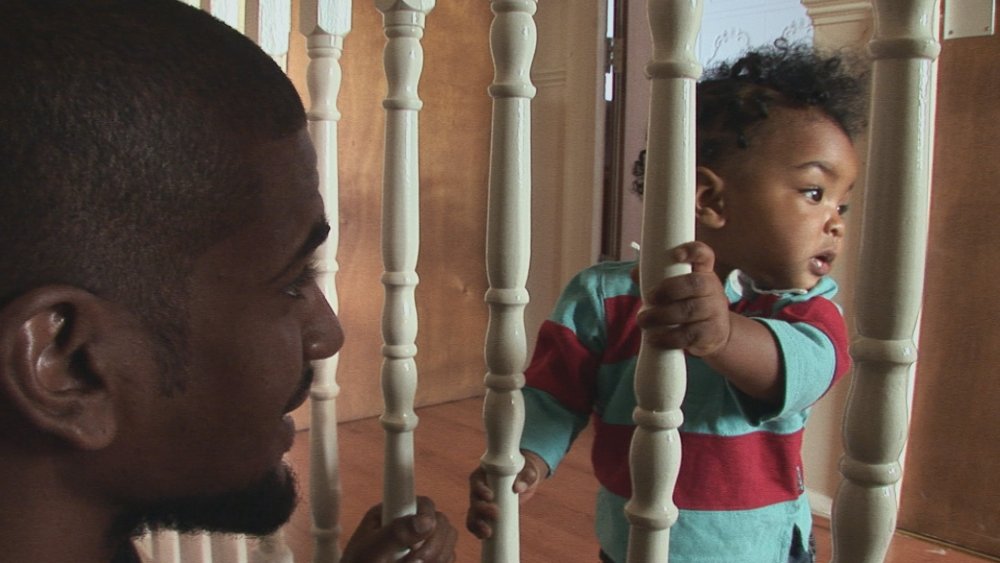
The Hard Stop (2016)
One excellent British film emerged from the Mark Duggan incident. Directed by George Amponsah, the documentary The Hard Stop (2015) is named after the aggressive tactical manoeuvre deployed by police in pursuit of Duggan, though the term also suggests the cataclysmic effect of the killing on the lives of Duggan’s friends and family.
Amponsah follows two of Duggan’s best friends, Kurtis and Marcus, in the years following his death. He underscores the men’s testimony by citing statistics about historical police brutality in the UK, and showing footage of the 1985 Broadwater Farm disturbances. As The Hard Stop unfolds, it becomes increasingly haunted by the traumas depicted in Handsworth Songs and The People’s Account, earlier works in this continuum of shock and sadness.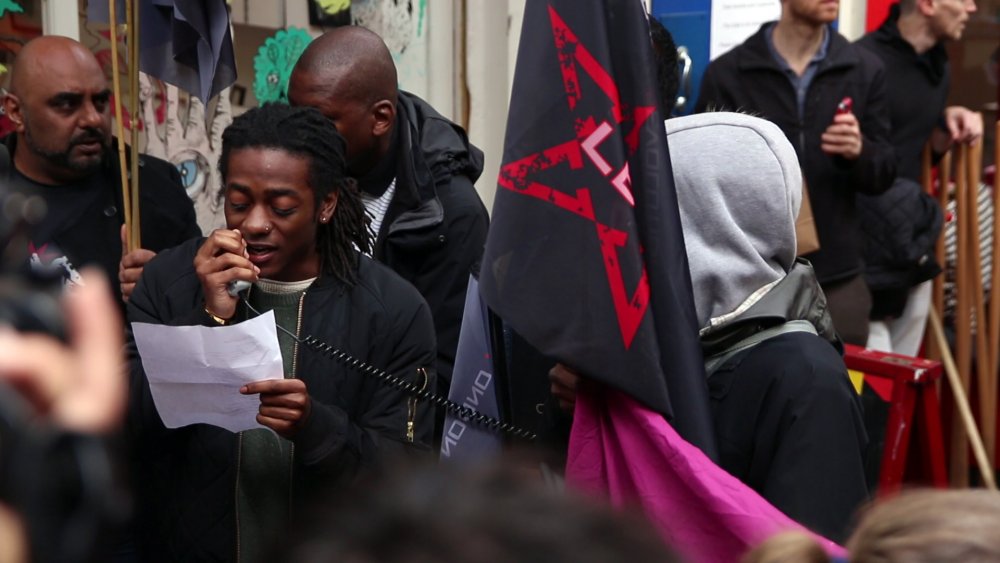
Generation Revolution (2016)
The Hard Stop was released a year after the harrowing American summer of 2014, which saw myriad police killings of unarmed Black people, including Eric Garner and Michael Brown, and the subsequent foundation of the grassroots Black Lives Matter movement. The energy of this movement emanated around the world, and was palpable in Cassie Quarless and Usayd Younis’s Generation Revolution (2016), an absorbing documentary record of young Black and Brown activists in London.
A similar intensity fires Shola Amoo’s A Moving Image (2016), an artful, impassioned examination of gentrification and its complex personal and geographical effects. I am personally excited by the work of contemporary Black British filmmakers including Morgan Quaintance, Onyeka Igwe, Jay Bernard, Ayo Akingbade, Larry Achiampong and Rabz Lansiquot, who, in the tradition of the workshop groups, play with form and archival material to question official national histories. There is, after a fairly fallow period, much to look forward to with regard to critically minded, politically engaged Black British moving-image work.
Living with ghosts
While researching this piece, I came upon a ghoulish news story that closed the narrative loop. In April 2020, at the height of the Covid-19 pandemic, one of The People’s Account’s key contributors, Millard Scott, a member of the Broadwater Farm Defence Campaign, was Tasered by police during an orchestrated sweep of his home.
The 62-year-old’s harrowing ordeal – Scott fell and lost consciousness – was filmed by a police officer’s body camera. Scott’s son, the rapper Wretch 32, uploaded the footage to social media in June while Black Lives Matter protests swept the globe in response to the filmed police killing of George Floyd in Minneapolis – this was the latest in a long line of viral mobile phone videos of Black suffering and death, its own macabre, 21st-century film genre.
Later, on the Guardian’s website, I watched a film in which actors read to camera the heartbreaking testimonies of 50 people whose lives were destroyed by the Windrush scandal. Also on the Guardian, I read that young Black men were stopped and searched by police more than 20,000 times in London during the coronavirus lockdown – the equivalent of more than a quarter of all Black 15- to 24-year-olds in the capital – and that over 80 per cent of the searches between March and May resulted in no further action.https://www.youtube.com/embed/_M4OKKrhhwQ?rel=0
I thought of Kelso Cochrane. I thought of Tony and Colin from Pressure. I thought of the lads in Blacks Britannica who weren’t going to take it any more. I thought of Blue from Babylon, and I thought about my father, a Black, British-born reggae musician, just like Blue, who cried tears of recognition when he saw the film for the first time at the Brixton Ritzy in 2016 as part of the BFI Black Star season I programmed.
I thought of David Oluwale, Colin Roach, ‘Cherry’ Groce, Cynthia Jarrett, Stephen Lawrence, Joy Gardner and Mark Duggan. I wondered whether film, criticism, my own work, could ever effect genuine material change. I wondered if I’d become desensitised to images of real death. I thought about the choking exhaustion of white supremacy. I closed my laptop and wondered if I’d be able to summon the strength to open it again.




